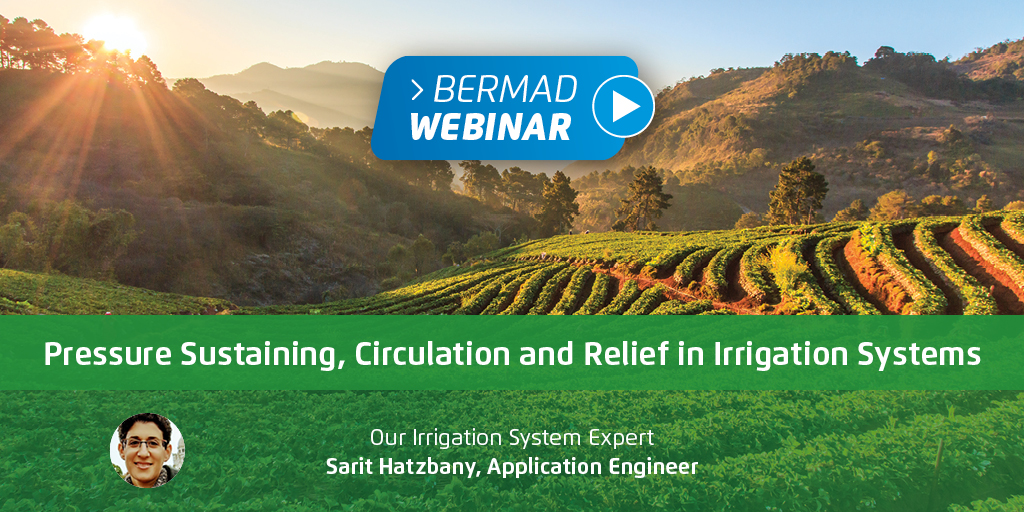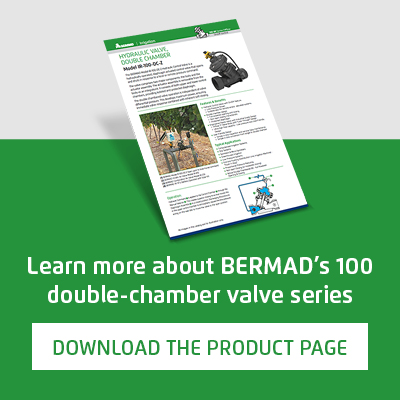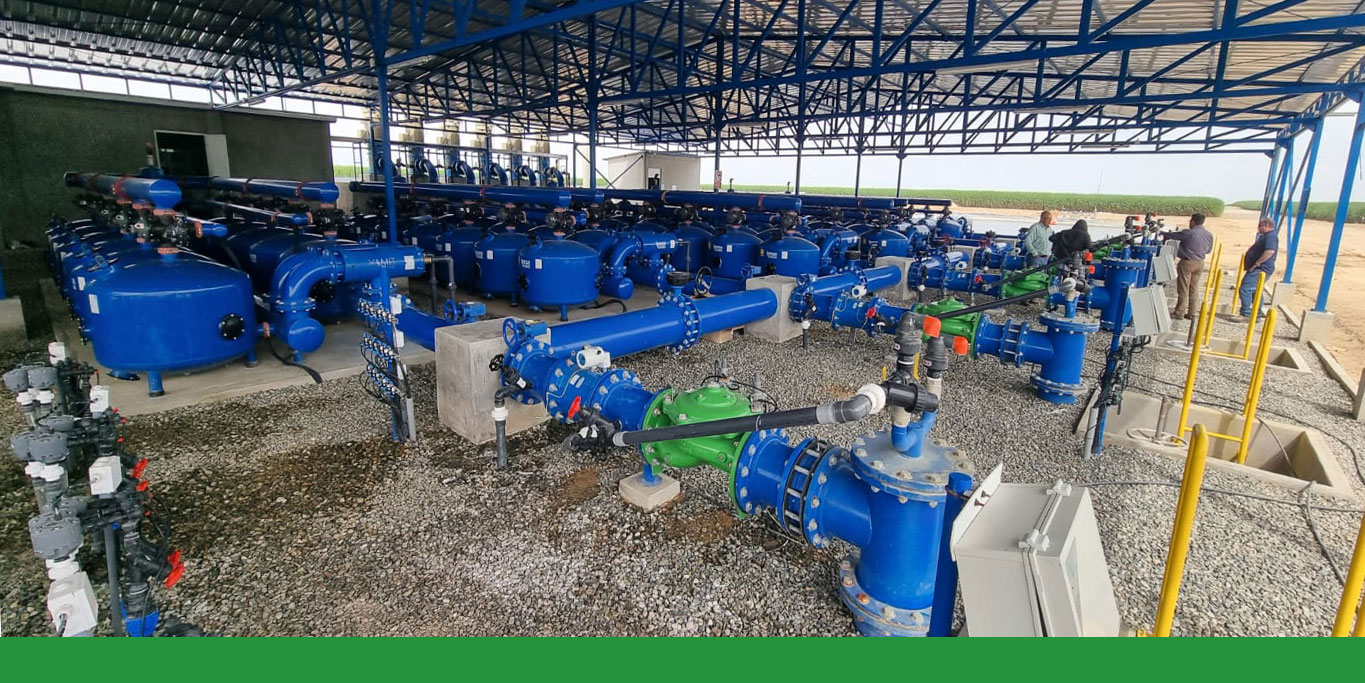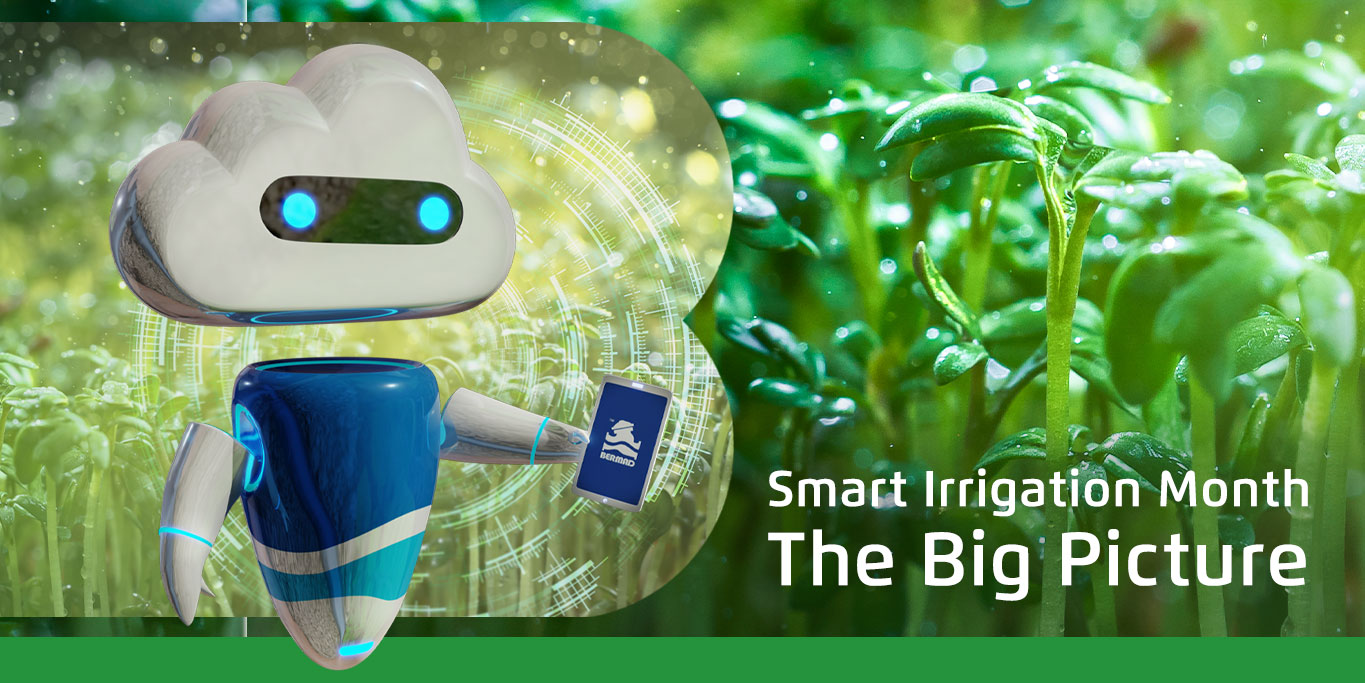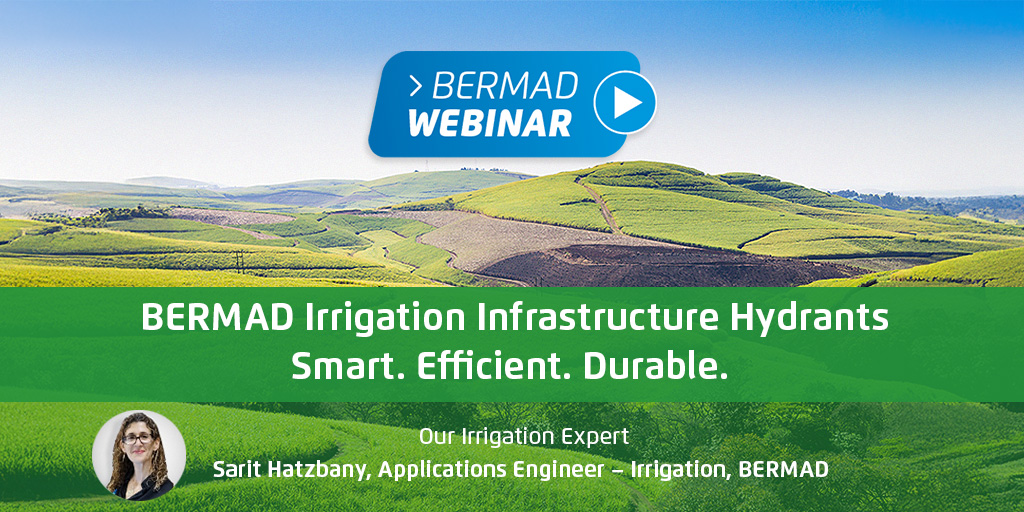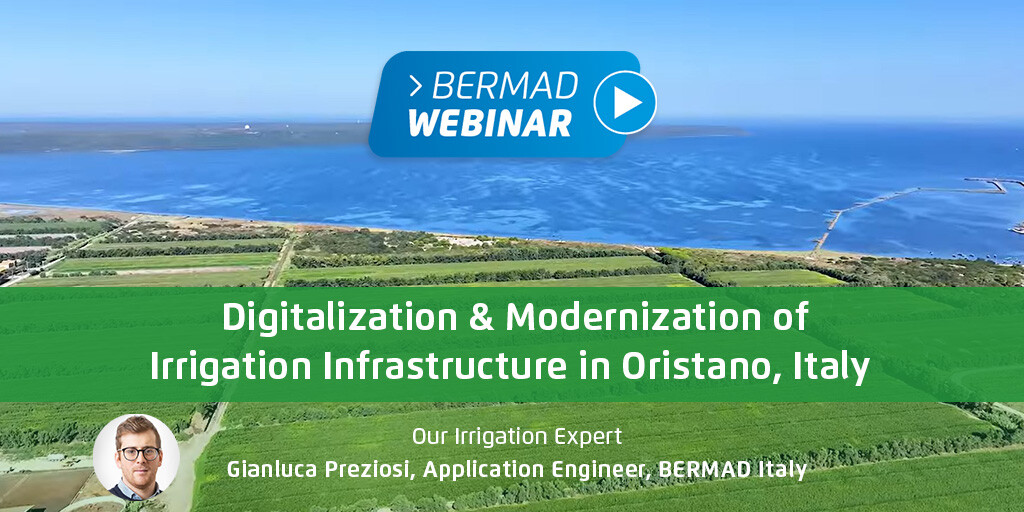In a recent BERMAD webinar, “Pressure Sustaining, Circulation and Relief in Irrigation Systems”, our Application Engineer Sarit Hatzbany took a closer look at pressure sustaining principles of operation and the key differences between relief, circulation and inline sustaining valves.
<<Missed the webinar? Watch Now>>
During the webinar, questions regarding the differences between the various types of valves and their applications were addressed:
Q: What is the fundamental difference between pressure reducing valves & pressure sustaining valves?
A: Pressure reducing valves are hydraulic automatic control valves that reduce higher inline pressure to a lower constant downstream pressure regardless of fluctuations in flow or upstream pressure. Pressure reducing valves sense and respond to changes in downstream pressure, where pressure sustaining valves sense and respond to changes in upstream pressure, regardless of fluctuations in downstream pressure. The pressure sustaining valve will throttle close once line pressure drops below the calibrated set point and will modulate to open when pressure rises above it.
Q: Do we still need a circulation valve if we have a VFD-operated pump system for irrigation?
A: VFD (Variable Frequency Drive) is a perfect solution for pump-operated irrigation systems. The technology has three drawbacks:
- Minimum limitation of the VFD in low demand conditions
- Pump station which is located in a remote place – will be less accessible for technical support in case of VFD malfunction
-
In a system which several pumps are operated using a duty VFD, when, for example, a pump is added while the VFD is manipulating the pump speed, the system might experience spikes of pressure.
To address these drawbacks, a hydraulic circulation pressure sustaining valve, installed offline, provide a complementary solution.
Q: Can a pressure sustaining feature be used with an active check feature in pumps discharge line? How exactly will it work with pump operation? Does it replace a normal check valve/non return valve?
A: Yes, a pressure sustaining feature can be added to BERMAD’s Active Check valve, Model IR-743 which offers the following benefits:
- Excellent mechanical check valve that closes before the column of water changes direction (in case of power failure)
-
Soft startup & soft shutdown of pumps with no pressure spikes and water hammers that leave a "hydraulic seal" on the system
During pump operation, the pressure sustaining feature ensures that the pump will be operating within its efficient range. So, the pump will not be forced by the system conditions to work at a very high flow and low pressure, thereby protecting it from overload and cavitation damage.
Q: Can an inline pressure sustaining valve control a downstream pipe burst?
A: Due to pressure drop associated with downstream burst, the inline pressure sustaining valve will throttle close and regulate according to the drop of pressure. However, since it will not lock in closed position, it cannot be used as burst control valve. See BERMAD’s IR-790 Burst Control Valves.
Q: Can we use a pressure relief valve in a pump station instead of a surge anticipating valve and under which conditions?
A: Pressure relief valves open to discharge excessive line pressure after the pressure rises above the set point, usually due to reduced demand. Surge anticipating valves are enhanced pressure relief valves with an added feature which allows the valves to open in response to the pressure drop which precedes the pressure surges caused by pump stops. The preopening of the valves prevents damaging water hammer from reaching the pumping station.
Q: When you have a pressure reducing and pressure sustaining valve, which pilot valve should you adjust first to get the valve to operate?
A: There is no real significance to which pilot is calibrated first. It usually depends on field conditions. See how to calibrate BERMAD’s IR-423 Pressure Sustaining & Reducing Valve.

